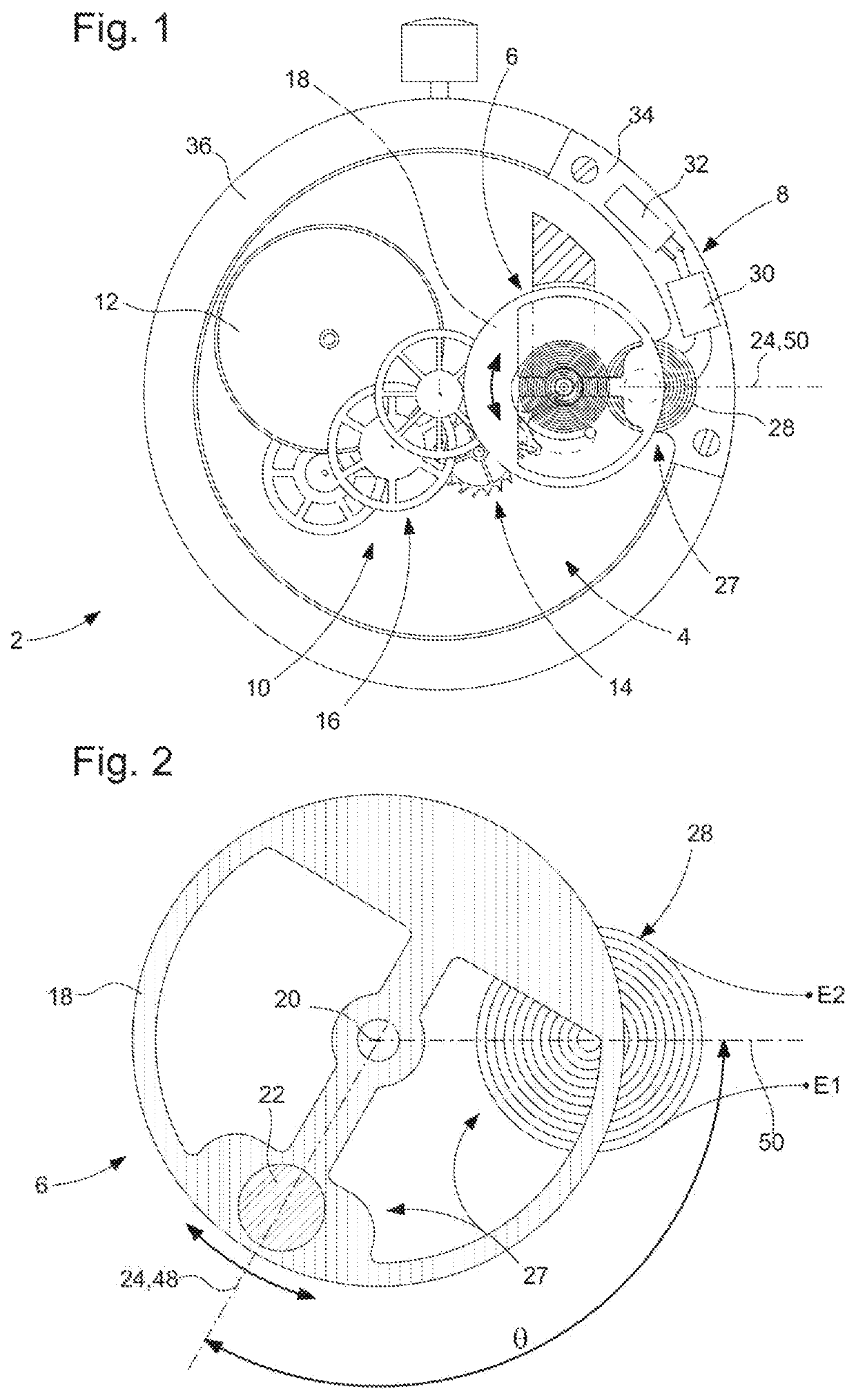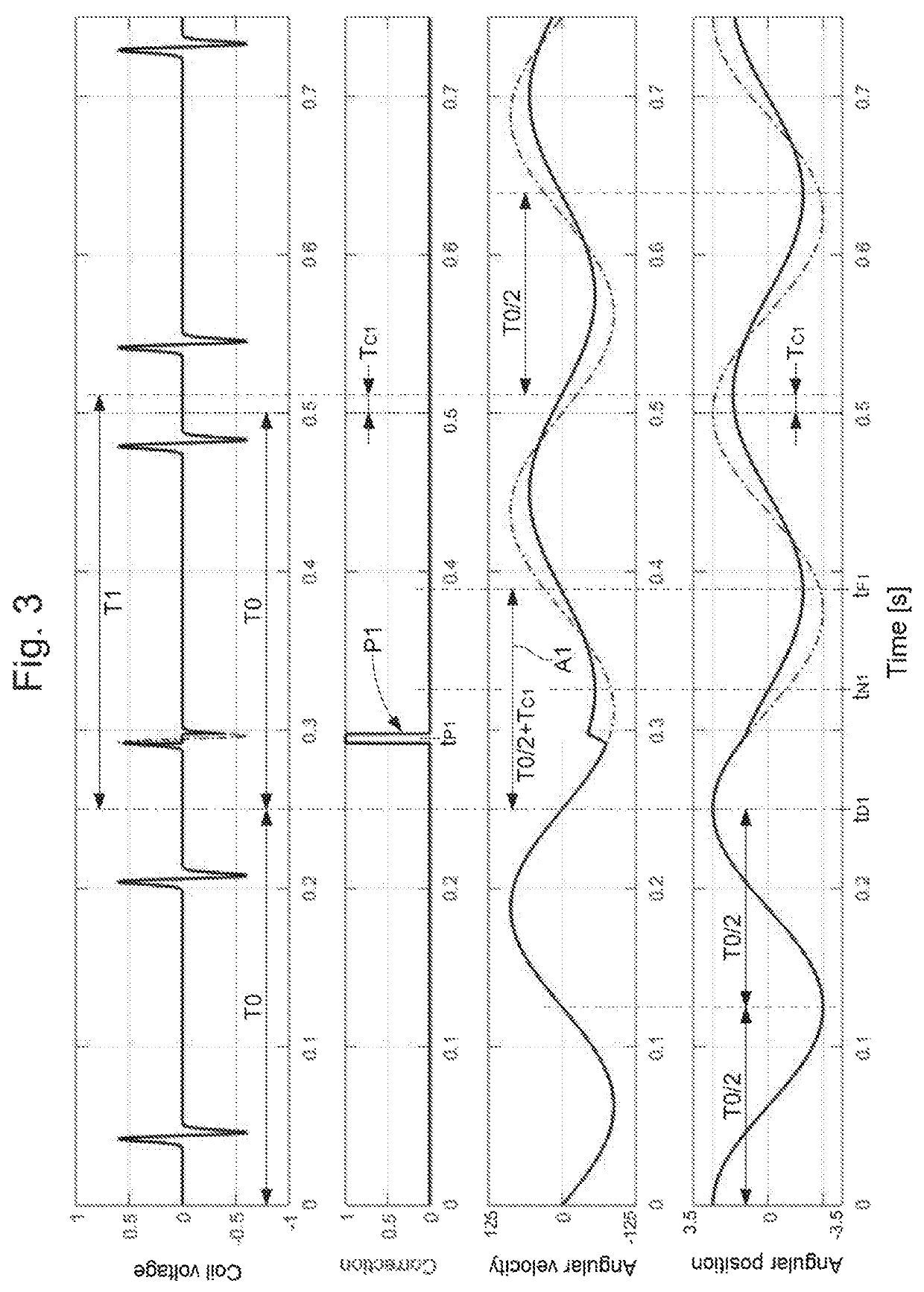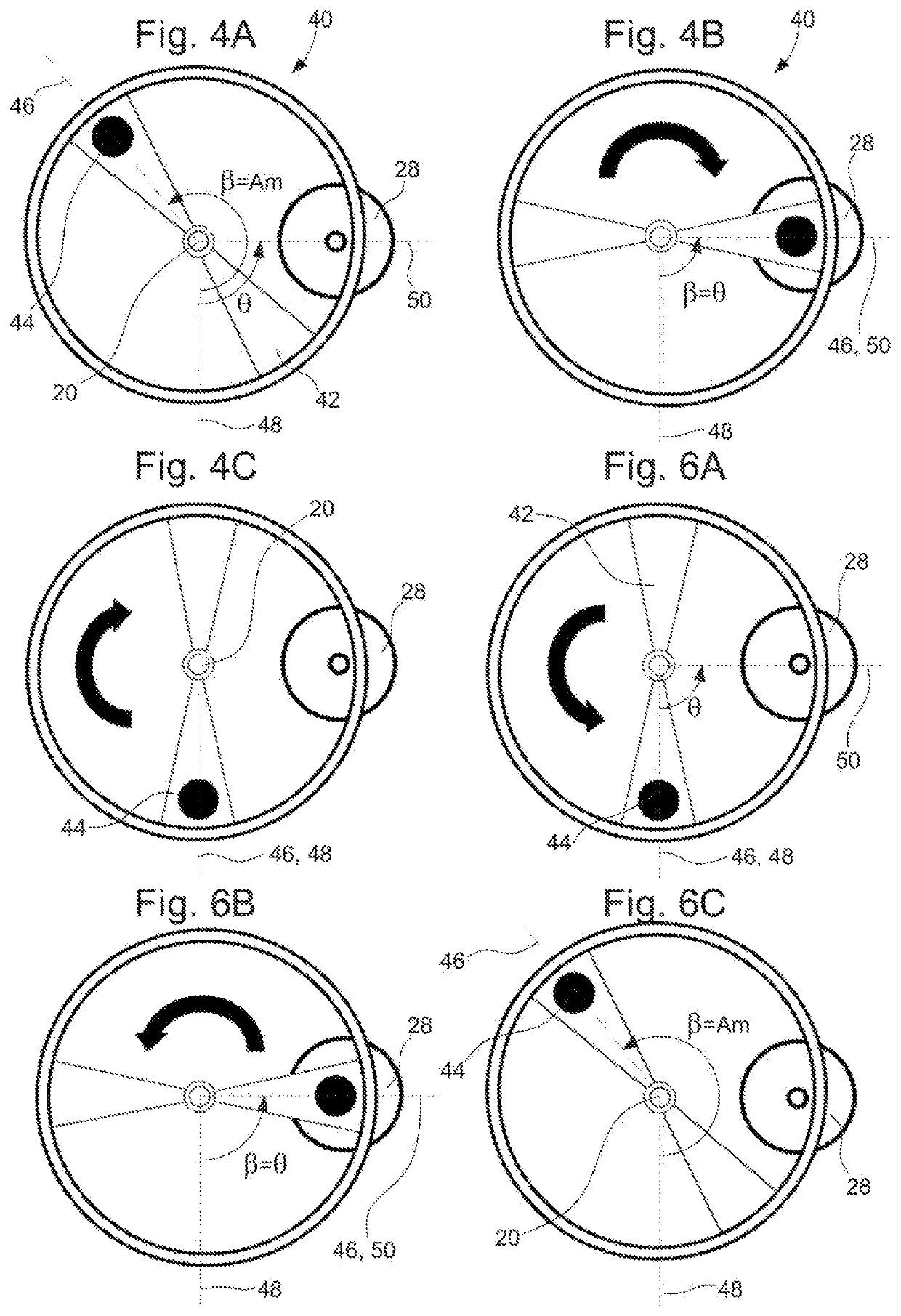Timepiece comprising a mechanical oscillator associated with a regulation system
a mechanical oscillator and timepiece technology, applied in the field of timepieces, can solve the problems of only functional electronic regulation, timepiece parasitic loss, and error in voluntary isochronism
- Summary
- Abstract
- Description
- Claims
- Application Information
AI Technical Summary
Benefits of technology
Problems solved by technology
Method used
Image
Examples
first embodiment
[0071]With reference to FIGS. 1 and 2 described above and to FIGS. 7 to 10C, a timepiece according to the invention shall be described hereinafter. This timepiece 2 comprises:[0072]a mechanism 12, 16 (shown partially),[0073]a mechanical resonator 6 (balance-spring) suitable for oscillating about a neutral position 48 corresponding to the minimal mechanical potential energy state thereof, each alternation of the successive oscillations having a passage of the mechanical resonator via the neutral position thereof at a median time and consisting of a first half-alternation ending at the median time thereof and of a second half-alternation starting at the median time thereof,[0074]a maintenance device 14 of the mechanical resonator forming with this mechanical resonator a mechanical oscillator which sets the running speed of the mechanism,[0075]an electromechanical transducer arranged to be able to convert mechanical power from the mechanical oscillator into electrical power, when the m...
second embodiment
[0093]With the aid of FIGS. 11 to 15, a timepiece according to the invention shall be described hereinafter.
[0094]FIG. 11 is similar to FIG. 2, but for an electromagnetic assembly 29 forming the electromagnetic transducer of a timepiece according to the second embodiment. It shows the mechanical resonator 6a in a horizontal cross-section at the level of the balance 18a thereof, this mechanical resonator being incorporated in a timepiece movement, similar to that in FIG. 1, instead of the resonator 6 shown in this FIG. 1. The references previously described shall not be described again herein. As a general rule, there is envisaged an electromagnetic assembly which comprises at least the coil 28 and a magnetized structure formed from at least one magnet and having at least one pair of magnetic poles, of opposite polarities, each generating a magnetic flux in the direction of a general plane of the coil, this pair of magnetic poles being arranged such that, when the mechanical resonato...
third embodiment
[0116]FIG. 19 is a flow chart of the regulation method implemented in the logic control circuit 62b of the All the features, all the electrical signals and the consequences of the various events that occur shall not be described in more detail, as they ensue from the explanations previously given above and the results are readily understood in the light of these explanations.
[0117]When the regulation device is started, the regulation circuit 74 is set to ‘POR’, in particular the bidirectional counter CB. The logic circuit then waits for the appearance of a pulse S2, namely in particular the rising edge thereof in the signal ‘Comp’. The detection of this rising edge triggers the timer which measures a first time interval TC2 the duration whereof is chosen such that the end thereof occurs in a first time zone ZT1 situated temporally between a second voltage lobe LUC2 and a first voltage lobe LUC1, particularly between the time t2 and the time t1 where these two lobes exhibit respecti...
PUM
 Login to View More
Login to View More Abstract
Description
Claims
Application Information
 Login to View More
Login to View More - R&D
- Intellectual Property
- Life Sciences
- Materials
- Tech Scout
- Unparalleled Data Quality
- Higher Quality Content
- 60% Fewer Hallucinations
Browse by: Latest US Patents, China's latest patents, Technical Efficacy Thesaurus, Application Domain, Technology Topic, Popular Technical Reports.
© 2025 PatSnap. All rights reserved.Legal|Privacy policy|Modern Slavery Act Transparency Statement|Sitemap|About US| Contact US: help@patsnap.com



